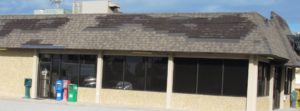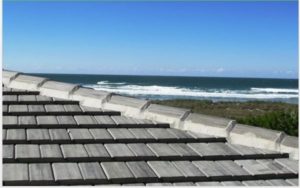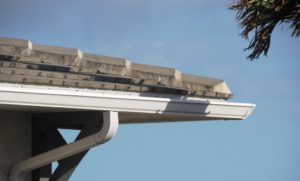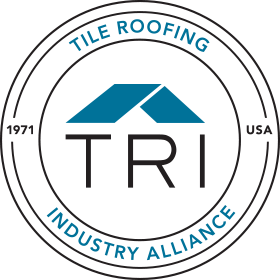
The 2017 Hurricane Season comes to a close at the end of November. The Caribbean was hit hard and full recovery in some areas will take years. On the US mainland Hurricanes Harvey and Irma left their mark. Roofing contractors are still scrambling to meet the demand for repairs and replacement of damaged roofing. Tile roofs and the contractors that install them shined during these two storms.
Hurricane Harvey hit Houston in late August, and then hung around the area for several days with devastating rains. In just 4 days some areas received more than Seattle’s average annual rainfall of about 40 inches. The flooding immediately displaced more than 30,000 people.
The Roofing Contractors Association of Texas (RCAT) was preparing to help even before Harvey made landfall. Contractors and roofers from around the state used personal funds and donations to purchase needed supplies. They loaded their pickups, dump trucks and trailers, coordinated with contractors, churches and social services in Houston, and headed South with supplies. Former RCAT President Paul Ramon said “Loved seeing my friends and my industry step up to help the people in need in Houston. RCAT was blessed to be in a position to help and support our fellow Texans! With hundreds of Roofing Contractors and product supplier members, we had an army of folks on the ground.” The TRI is proud to be part of an industry with people like this! You can read more in this Roofing Contractor magazine article and in this Facebook “thank you” post from Luis Rodriguez to RCAT.
Hurricane Irma hit Florida stronger than any Hurricane since Wilma in 2005. Over 1.5 million Floridians were left without power and the accompanying rains and flooding caused additional damage.


Many asphalt shingle roofs are covered with blue tarps, and others have not yet had even temporary repairs made; the vulnerability is clear.
But modern clay and concrete tile installations appear to have fared very well against Hurricane Irma. Along A1A from Port Orange to Ormond Beach there are many wind-stripped asphalt shingle roofs needing complete replacement next to tile installations with minimal or no apparent damage. The devastation from Hurricane Andrew in 1992 brought changes. “Andrew made it obvious that Florida needed their own building code system for such catastrophic events.” Says Les Dickson, Dickson Roofing, Naples, FL.
The Florida Concrete & Clay Tile Installation Manual was adopted as a part of the Florida Building Code. It is now in its 5th Revised Edition and titled FRSA/TRI Florida High Wind Concrete and Clay Tile Installation Manual. It includes minimum standards and best practices for tile installations to resist Florida weather challenges.

We revisited several homes on the ocean built in the last 5 -10 years in Daytona Beach and could see no apparent damage. The picture above is one you may have seen in our Florida training over the last few years. The one below is of the same hip November 14th, 2017. This is an oceanfront home in an area where asphalt shingle roofs were peeled from the deck.

Hurricane Irma took a few tiles as souvenirs from older installations but for the most part modern tile installations performed well in the storms with minimal damage. “The Florida Building Code and FRSA/TRI Florida High Wind Concrete & Clay Tile Installation Manual criteria have been storm proven to be effective! Tile roof damages from Hurricane Irma are minor with most being repaired rather than replaced. That’s why we have these tile roof installation codes,” explained Les Dickson.
